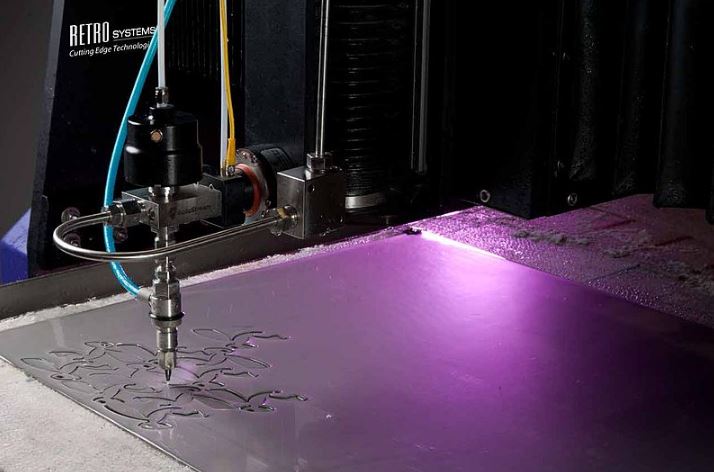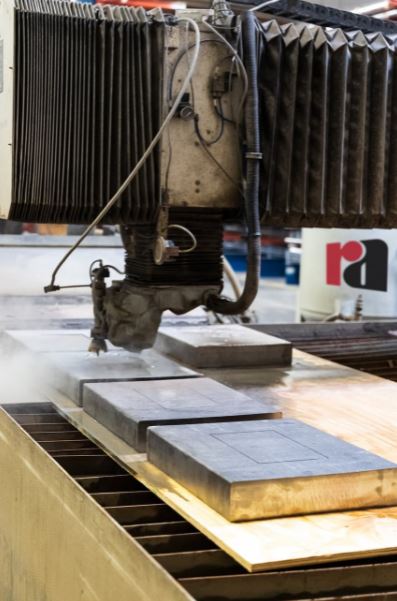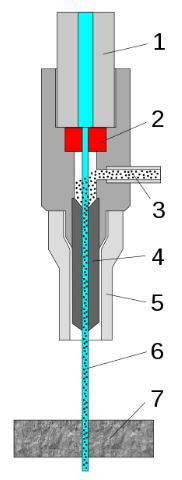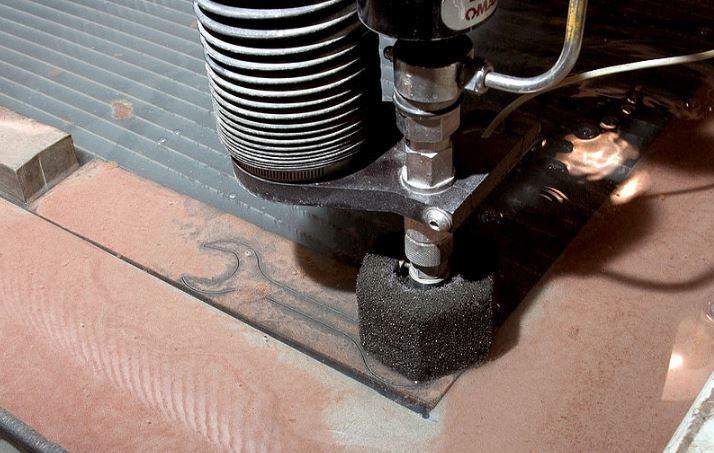Water’s uses and benefits are nearly impossible to define; aside from the fact that all living things require water to survive, it is a universal solvent, making it very functional. Water has many purposes, but you may not be aware of all of its magical properties. For example, you may have heard (or observed) that water can cut through stones and boulders over time, or even quite rapidly, but do you believe that water is strong enough to slice through metal?
As you might have gathered, the answer is yes. High-pressure water cuts through metals! It’s been used for this purpose for quite some time. However, you can’t just spray water on a metal rod and hope for it to snap in two; you must use water in a precise way for it to be strong enough to cut through metal.
Then There Are Waterjets
A waterjet is a specialized tool used in machine shops that uses a high-pressure stream of water to cut through metal. The water pressure at the mouth of the waterjet’s outlet is 30 times higher than the pressure of water seen in car wash hoses. As crazy as it seems, water can truly cut metal if it flows fast enough.
When cutting metal with water, it’s important to maintain the spray consistently. Waterjets may cut because the spray is directed through an extremely thin jeweled nozzle at very high pressure, ensuring that the spray remains coherent. Unlike metal cutters, a waterjet never dulls and never overheats.
A waterjet can cut through a “sandwich” of materials with a thickness of up to four inches. This odorless, dust-free, and low-heat method may cut through materials as thin as five-thousandths of an inch.
Because of the little jet stream, the first cut can also serve as the final finished surface. This single-cutting method saves money on both material and machining.
Previously, a saw or other mechanical metal cutting technique could only cut one piece of metal at a time. It was time-consuming and costly.
Today, many soft and hard materials are sliced using computer-controlled waterjet and abrasive jet cutting. At over 900 mph, the ordinary water-abrasive mixture exits the nozzle. The latest machines have jet speeds of around Mach 3 and can cut to two-thousandths of an inch.
Basics of Waterjets
Waterjet: Pure vs. Abrasive
The term ‘waterjet’ refers to any cutting instrument that uses a high-pressure stream of water in its broadest sense. Waterjets are further subdivided into pure and abrasive types.
Pure waterjets are the original version of the technology, and they cut with a stream of pressured water, as their name implies. Seals, plastic, paper, and carpet are among the softer materials they are utilized for.
However, the pure waterjet can only cut soft and/or thin materials like foam, cardboard, fabric, rubber, foil, and wood.
On the other hand, Abrasive jet technology expands the benefits of pure waterjet technology to tougher materials such as ceramic, wood, glass, metal, and stone. Waterjet abrasives are primarily constructed of garnet and range in grit size from 50 to 220 mesh, with 80 mesh being the most prevalent.
Many waterjet machines can convert from cutting with pure water to abrasive water, making them extremely versatile.
How Does It Work?
The use of high-pressure water concentrated into a beam by a nozzle is the same in all waterjets. Most machines do this by passing the water through a high-pressure pump first. The two types of pumps utilized to generate this high pressure are an intensifier pump and a direct drive or crankshaft pump.
Like a car engine, a direct-drive pump uses plungers attached to a crankshaft to force water through high-pressure tubes. The water is forced through a tiny hole by an intensifier pump, which uses hydraulic oil to move a piston. The water then flows via the high-pressure tube to the waterjet’s nozzle.
A jewel aperture in the nozzle concentrates the water into a thin beam. This beam of water is blasted from the nozzle, cutting through the material by blasting it with a high-speed jet of roughly 2,500 feet per second (760 meters per second).
Abrasive waterjets follow the same procedure until the water reaches the nozzle. An abrasive intake is used to feed abrasives like aluminum oxide and garnet into the nozzle. After combining with water in a mixing tube, the abrasive is driven out the other end under high pressure.
What Is the Speed of a Waterjet Cut?
Abrasive jets are utilized for tougher metals, while waterjets are used for softer materials. Previously, water leaving the nozzle of an abrasive water jet could reach up to 900 miles per hour (roughly 1450 kilometers per hour).
However, the latest abrasive waterjets are equipped with numerous automated equipment of our current age and have a startling speed of over 3700 kilometers per hour (2300 miles per hour)! Waterjets can cut metal to within 0.0002 of an inch because of their tremendous speed! A normal human hair strand is 0.0004 inches long, just to give you an idea of how small that statistic is.
Some Waterjet Cutting Limitations
Blind Cuts
Waterjet cutting is primarily used to cut through a piece of material rather than to cut to a specific depth, which is laborious and often inaccurate. However, this method has been utilized for engravings where depth isn’t as crucial.
Size of the Holes
It is commonly considered that a stream width of 0.04 inches is the smallest hole that you can correctly produce, although this is not the case. Before cutting along the cut line, the waterjet must first break through the material. The equipment creates the initial hole by blasting a forceful stream of water and abrasive at the material surface, a process known as piercing.
The initial hole is somewhat rough, and it is only after it has been punctured that the cut becomes smooth. For this reason, a hole should be two times the diameter of the waterjet to achieve a clean and accurate hole, so in most circumstances, a diameter of 0.1 inch is not suggested.



